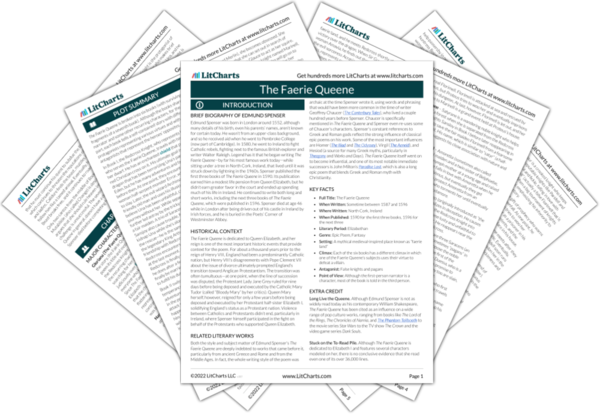There are a couple self-contained stories like the one here about Placidas and Amyas that often involve trickery and mistaken identity. Such stories have ancient roots, but for Spenser, one of the biggest influences would have been Geoffrey Chaucer’s
Canterbury Tales, which is full of short, self-contained stories involving deception and impersonation.
